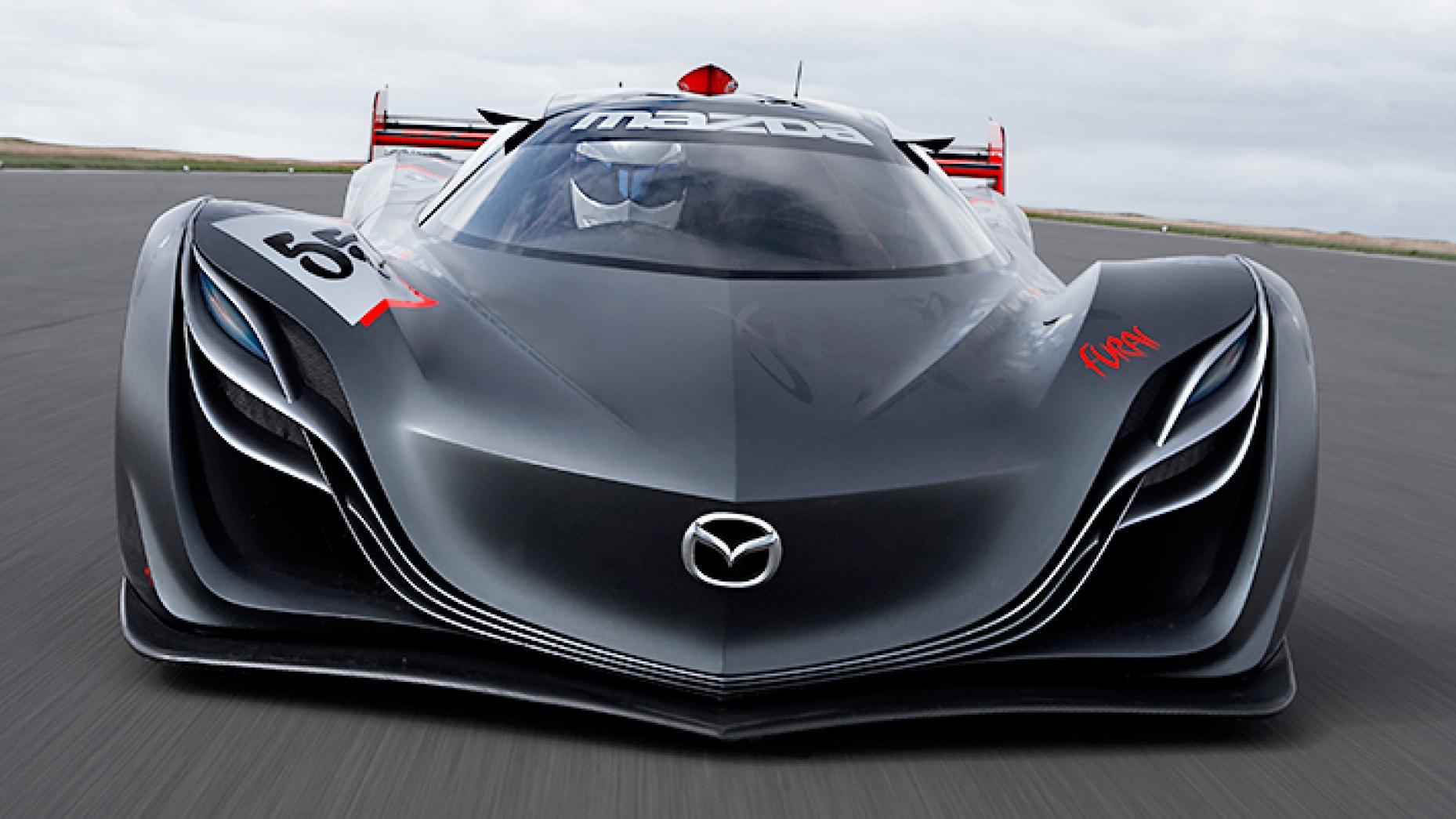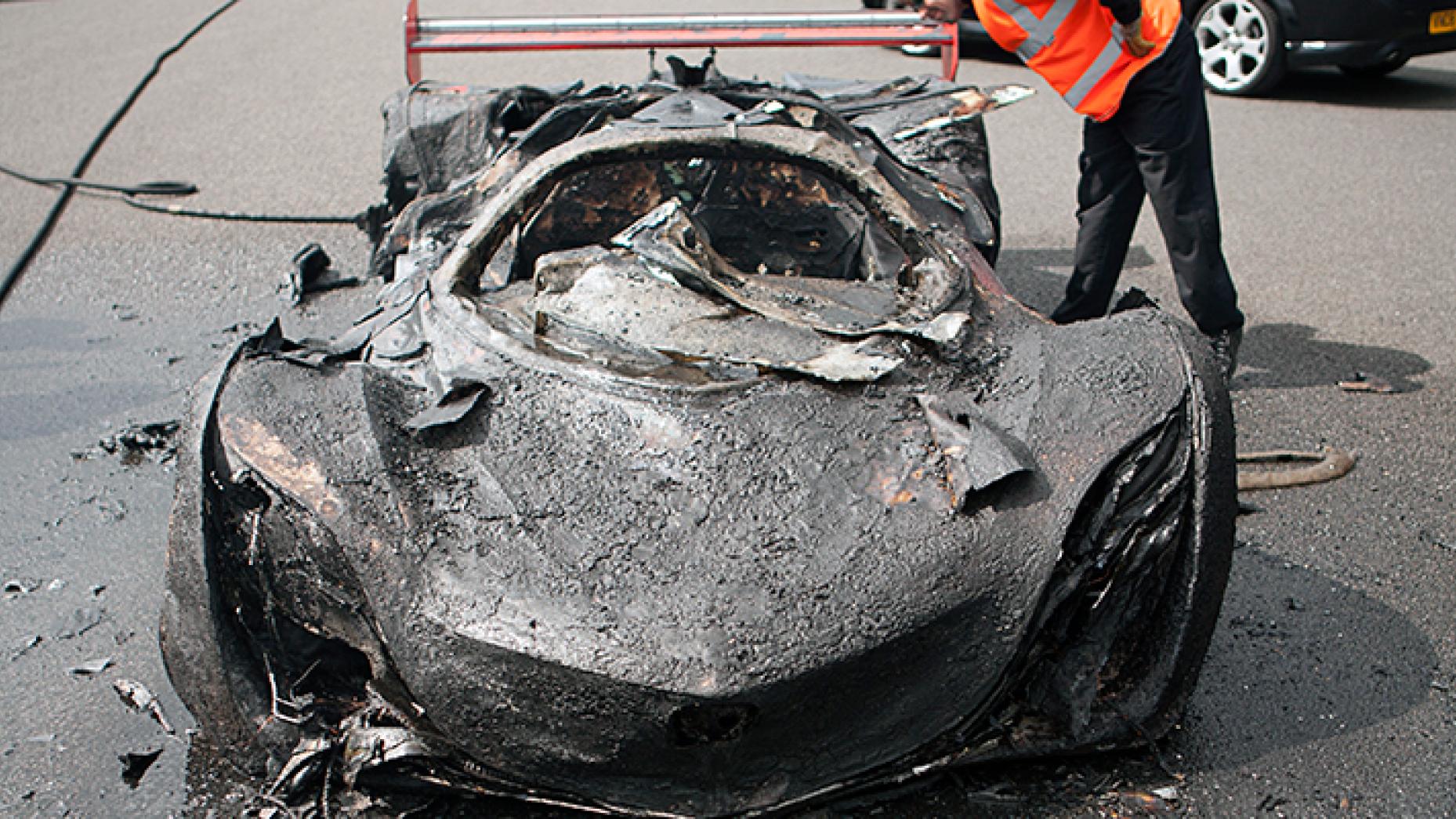Exclusive: how the Mazda Furai burned to death

In early 2008, Mazda revealed its Furai concept car, a carbon-composite, race-bred masterpiece. Later that year, Top Gear magazine ran the world’s only drive of the Furai.
And then the car mysteriously disappeared, never to be seen again. Was it spirited away into some secret collection? Walled into a glass display case? Not… quite. But first, a bit of background.
STORY Charlie Turner
PHOTOS Lee Brimble
This feature was originally published in the 20th Anniversary edition of Top Gear UK magazine (October 2013)

Over a period of three years between 2005 and 2008, Mazda produced some stunning design concepts showcasing its ‘Nagare’ design language.
And although Mazda subsequently evolved Nagare into the ‘Kodo’ theme in 2011 with the Shinari concept (translated into road-going metal like the CX-5 and Mazda6) the Nagare dynasty remains a glimpse into a world where Mazda designers were set free to push boundaries.
There were no limits or restrictions. The Furai? Basically the poster boy of Nagare, the last and most eye-popping vehicle to be born of that philosophy.
Created as a concept to show how a racecar for the road might look, it was the brainchild of a design department deeply proud of its motorsport heritage, the most extreme concept of its generation.
It won global acclaim, but was more than that: the Furai was possibly the defining concept car of its era. Which makes what happens next all the more tragic.
So what did actually happen that summer?

Bentwaters Parks, 19 August 2008. 11.52am. Time for one last shot. The Mazda Furai growls threateningly on the runway. No trailer-queen concept car, this is a living, fire-breathing breath of fresh air.
Under its carbonfibre bodywork lurks an LMP2 Courage chassis and a 460hp rotary race engine. Running pure ethanol. The Furai is very noisy. It is very fast.
And right now, Top Gear is the only magazine in the world to have driven it. It will remain so.

This morning saw The Stig arrive from nowhere, drive very fast down Bentwaters’ 2km runway, nod with apparent approval to writer Bill Thomas and then disappear in the direction of Great Yarmouth.
Following Stig’s exit, Thomas has spent the last hour firing the car up and down the tarmac under the watchful eye of the Furai support team, works driver Mark Ticehurst and the local fire crew.
With the story in the bag, Bill departs to file his copy, and I’m left with photographer Lee Brimble to ensure we do justice to what surely must be one of the most stunning concept cars ever created.

As we’ve been shooting, I’ve spotted the Furai’s central exhaust spitting a thin cone of blue flame on downshifts. It’s this I want to capture on our last run. Ticehurst, duly instructed, heads off at pace, and Lee and I jump into the tracking vehicle and barrel after him, leaving the fire and support crews at the end of the runway.
We catch the Furai over the crest of the runway (the tarmac at Bentwaters rises in the middle, something that’s about to take on significance) and track it down towards the far end, Brimble snapping furiously.
As Ticehurst begins to slow for the turn and drops down through the gears, things start to go wrong. The Furai is making a noise less Le Mans racer and more… fatally wounded elephant. “That doesn’t sound good,” mutters Lee, face pressed to camera as we track the Furai around its turn.
Then, as the Mazda straightens, Lee and I spot the same small lick of fire deep within the engine bay at the base of the bulkhead. Priceless concept. Flames. Ah.

“FIRE! OH GOD, IT’S ON FIRE!” I state calmly, resisting the urge to panic. Ticehurst, of course, can’t hear me, so I bury the throttle to try to catch him and warn him of the danger.
Unsurprisingly, even a wounded, smoking Furai is faster than a people carrier. It takes a few seconds or so of furious gearshifting and horn honking for us to draw alongside the now-smouldering Furai.
“MARK! FIRE! FIRE! GET THE HELL OUT! MARK, IT’S ON FIRE!” I bellow, still entirely keeping my panic under control.
Ticehurst kills the engine and jumps out before the car has even reached a halt. He starts running. He keeps running. The lick of flame has taken hold, and now the engine bay is engulfed.
Where are the fire crew? I realise that, because of the natural rise in the middle of the runway, we’re out of sight. As Brimble scrambles from the tracking car, I thrash towards the horizon with horn blaring and lights flashing, desperate to draw the fire crew’s attention to the unfolding situation, which, though shrinking in my mirror, is clearly worsening by the second.

Eventually alerted, Suffolk’s finest leap into their truck and set off towards the plume of smoke, siren and lights blaring. I turn back to the Furai, where the scene is even grimmer.
Ticehurst is crouched, head in hands, 200 yards from the car, watching the fire take hold. As the ethanol burns, it’s clear the game is up. With the wind blowing from directly behind the Furai (the name aptly translates as sound of wind), the fire is being fanned inexorably towards the nose of the car.

The fire crew arrive with a traffic cone wedged under their truck. Hoses out, they douse the flames, the force of the water blasting the bodywork from the Furai’s carcass, revealing the bones of its substructure.
One of the fire crew rips at a door to get better access to the bulkhead. Still burning, it comes off in his hand. At first, I’m annoyed at the disrespect he’s showing this priceless, irreplaceable car.
Then I realise that’s like worrying the Titanic’s deckchairs are getting damp. As the crew hose the Furai, its Mazda badge gets blasted off and onto the tarmac, where it comes to rest surrounded by charred carbonfibre.

From spotting the first flame to staring at the soggy, scorched carcass of one of history’s most beautiful concept cars has taken less than eight minutes. The Furai is dead. Dead with shocking speed, savagery and finality.

Disposal of the body is swift. The remains of the Furai are gathered up and repatriated to Mazda’s Advanced Design Studio in Irvine, California; where it now lies is anyone’s guess.

But a piece of charred Furai still sits on my desk, a reminder of how quickly and how badly things can go wrong. I look at it daily.
Understandably, Mazda didn’t want the Furai’s demise made public at the time, but their decision to allow us to publish this story hopefully marks the start of the next chapter in the Furai’s history.
If ever a concept car deserved to rise from the ashes, surely it is this one.

From delight to disaster in just eight minutes

At least the wing escaped the burn

It did work though. For a bit…

Amazing design flourishes, now lost forever

Stig behind the wheel. Note: car not on fire.









